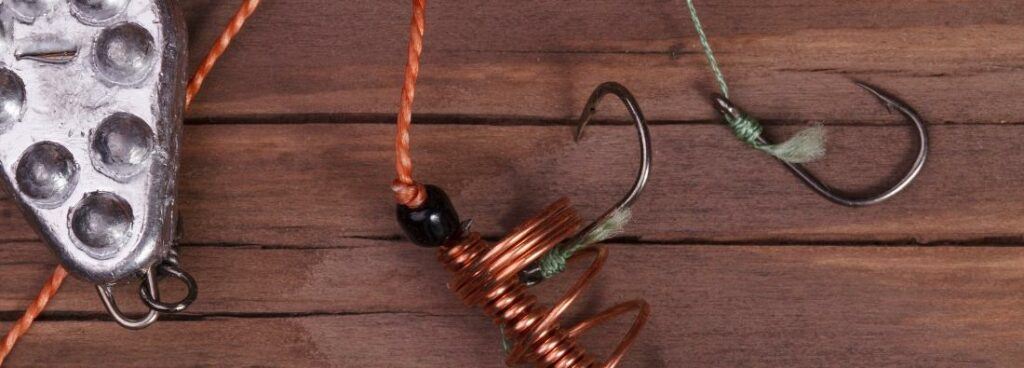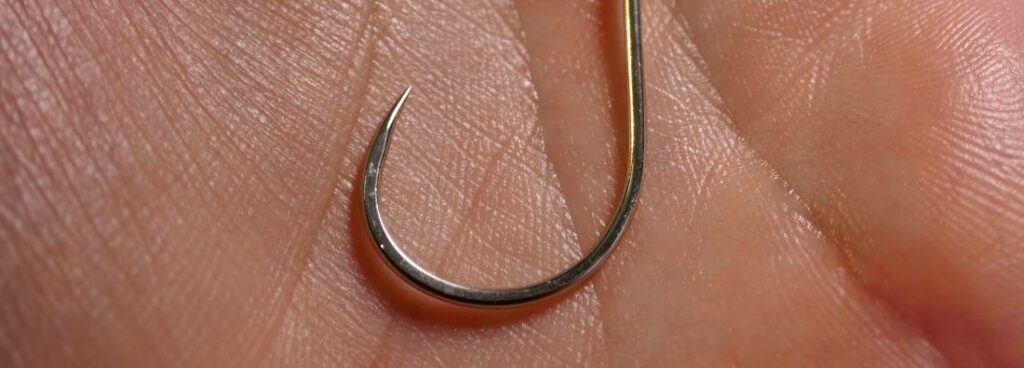Stories Worth Reeling In...
Last Updated on September 19, 2023
Using multiple hooks to catch more fish has always piqued a lot of my viewers’ interest. Is it, however, lawful? Is it moral? And how well does it work?
In this blog post, we’ll dive deep into the world of multiple hook fishing. We’ll look at the legal implications and regulations surrounding this technique and the potential advantages and disadvantages. Join me as we explore the ins and outs of fishing with multiple hooks, whether you’re a seasoned angler looking to try something new or a curious novice.
Table of Contents
Knowing the rules and restrictions governing this technique before using multiple hooks is crucial. Specific regulations govern the use of multiple hooks in many areas and bodies of water. For instance, using more than one hook on a single line when freshwater fishing is prohibited in some states.
These regulations were put in place to safeguard fish populations and ensure they are strong and sustainable for future generations for a good reason. Multiple hooks increase the chance of unintentionally harming or killing fish, which can eventually result in a decline in fish populations.
In addition to abiding by these rules, it’s critical to use multiple hooks sensibly and carefully. Use barbless hooks, handle fish gently release them immediately, and keep space clear in areas where fish are known to gather.
By adhering to these best practices, we can ensure that our fishing activities have a minimal effect on the environment and the fish populations that call it home.

The number of hooks that can be on a fishing line depends on the fishing laws and rules of the place where you are fishing. There may be no limit on how many hooks you can use in some places. In other places, there may be limits on how many hooks you can use for certain types of fishing or for certain types of fish. Before you set up your fishing line, it’s always a good idea to check the local fishing laws and rules to ensure you follow them.
Anglers can benefit from using multiple hooks in several ways. First of all, it makes it more likely to catch fish.
The likelihood of luring and catching a fish naturally increases with more hooks in the water.
Using multiple hooks also enables anglers to experiment with various types of bait and improves their chances of luring various fish species.

For instance, if you’re catfish fishing, you might use two hooks, one with chicken liver and the other with a worm or cut bait. You’re covering all your bases and increasing your chances of success in this manner.
Similarly, when fishing in areas where various fish species are known to congregate, using several hooks and baits can help you catch various fish at once.
Using multiple hooks can also help when fish are biting frequently and violently.
Having several hooks in the water can help you catch fish in these circumstances effectively.
Remember that multiple hooks entail many obligations and risks. As previously mentioned, to prevent any unintended harm, abide by the law and use this technique responsibly.
It’s important to think about the possible disadvantages and risks of using multiple hooks when fishing. The potential harm to fish and other aquatic wildlife should be considered, especially if the hooks are barbed, there is a higher chance of injuring or killing a fish.
Also, using multiple hooks can raise the risk of unintentionally harming or killing other species, such as turtles or birds.
The morality of using multiple hooks is a crucial factor as well. It’s important to respect differing viewpoints on this issue because some anglers and conservationists may consider it to be unsportsmanlike or even cruel.
Local laws or fishing etiquette in some places may also forbid or restrict using multiple hooks when fishing.
Overall, even though using multiple hooks can have some advantages in specific circumstances, it’s important to weigh the potential drawbacks and consider the ethics of this fishing technique.
To ensure thriving fish populations and safeguard the larger aquatic ecosystem, our duty as anglers is to engage in ethical and sustainable fishing methods.
Even though using more than one hook may significantly increase your chances of catching fish, it’s still important to use them adequately.
When using multiple hooks, take into account the following best practices:
Use barbless hooks: Using barbless hooks can help to lower the possibility of fish injury significantly. This hook causes less trauma and allows for quicker release because removing it from the fish’s mouth is simpler.

Avert crowding: Using too many hooks can raise the possibility of tangled lines, which can frustrate anglers and harm fish.
Use circle hooks: These hooks are especially effective when fishing for larger species or with live bait. Circle hooks are made to catch fish in the corner of the mouth, which can reduce the chances of harm or death.
Handle the fish carefully: When you catch a fish, handle it carefully to avoid causing harm. Wet your hands before handling the fish, and gently remove the hook with pliers or forceps if you need to release the fish quickly and carefully to minimize stress and injury.
Follow local regulations: Always check the local regulations and guidelines for using multiple hooks in the area you plan to fish. Different bodies of water or regions may have specific rules and regulations that you need to follow to protect the fish population and maintain the balance of the ecosystem.
Following these best practices, you can enjoy using multiple hooks while minimizing harm to fish and other aquatic life. Remember to prioritize ethical and sustainable fishing practices to preserve the environment for future generations of anglers.
Anglers can explore various techniques, such as using different bait, and lures, or fishing in areas with higher fish populations, as alternatives to using multiple hooks to improve their catch rates.
Fishing with multiple hooks can be advantageous and disadvantageous, depending on the situation and location. While it may increase the likelihood of catching fish, it can also harm fish and other aquatic life if not used responsibly.
Anglers must be aware of the laws and regulations governing multiple hooks in their area and use best practices to avoid unintended harm.
So, can you fish with more than one hook? It depends! Before deciding to use multiple hooks, it’s critical to understand the legal implications, benefits, and drawbacks.